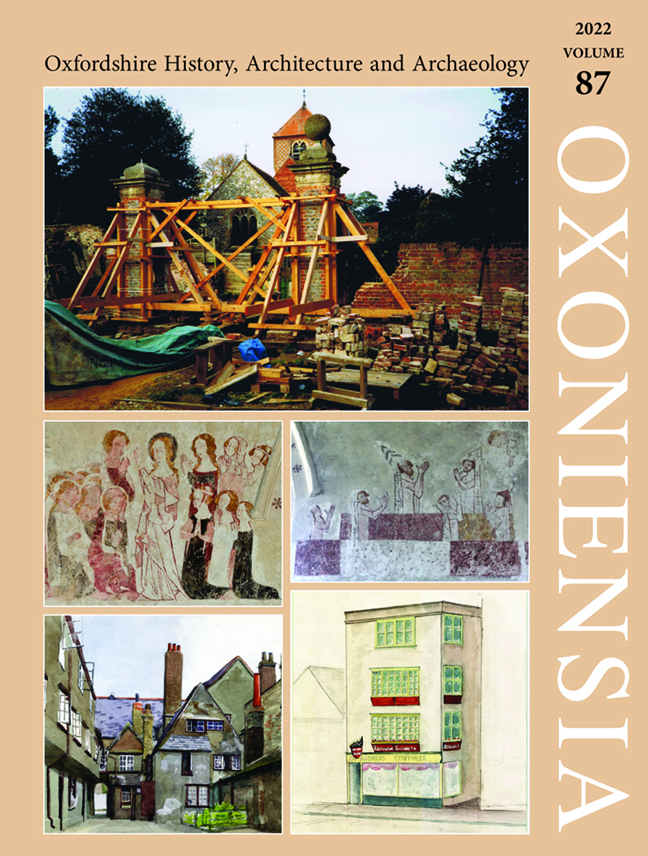A Reassessment of the Fourteenth-Century Wall Paintings at St Mary’s, Chalgrove
Published online by Cambridge University Press: 17 February 2024
Summary
SUMMARY
This article provides a reassessment of the dating, patronage, and artistic connections of the remarkably preserved chancel paintings in the parish church of St Mary’s, Chalgrove. It is argued that the chancel was rebuilt and its wall paintings created between 1320 and c.1325. Evidence for this dating is present within the episcopal register of John Dalderby, bishop of Lincoln (1300–20). The same register indicates that the nearby abbey of Thame was a financial patron of the project. The influential managerial role of Simon de Croilland, Chalgrove's vicar from 1319 to 1333, will be proposed. The strong stylistic and iconographic connections that exist between the Chalgrove sequence and the prefatory image cycles of the early fourteenth-century Fenland psalter group will additionally be identified in order to situate the Chalgrove paintings within the larger artistic context of late-medieval England.
The parish church of St. Mary’s, Chalgrove is located approximately ten miles south-east of Oxford (Fig. 1). Its chancel contains a complex and richly pigmented series of wall paintings, illustrating both the Infancy and Passion of Christ as well as the Final Days and Death of the Virgin Mary (Figs. 2–5). Although scholars have long agreed that the chancel was rebuilt and painted with these images in the fourteenth century, a variety of theories regarding the exact dating and patronage of the project have circulated within literature devoted to the site. This paper represents a return to the original documents relating to the chancel's reconstruction in order to gain a more accurate understanding of the mural scheme's dating and origination. This paper additionally works to identify the source of inspiration for the design of the painting sequence through comparison with contemporary manuscripts.
MEDIEVAL HISTORY OF ST MARY’S
Chalgrove church, in the medieval diocese of Lincoln, was established by the late eleventh century when it was given to the collegiate chapel of St Nicholas in Wallingford castle for endowment of a prebend. In practice it operated as an independent parish church with its own rector, and the right to present the rector (and prebendary) passed usually with the honour of Wallingford until the fourteenth century, when the chancel paintings were created. After the death of Piers Gaveston, earl of Cornwall in 1312, the advowson (the right to nominate the rector) was transferred to the Crown.
- Type
- Chapter
- Information
- Oxoniensia , pp. 27 - 44Publisher: Boydell & BrewerPrint publication year: 2022

